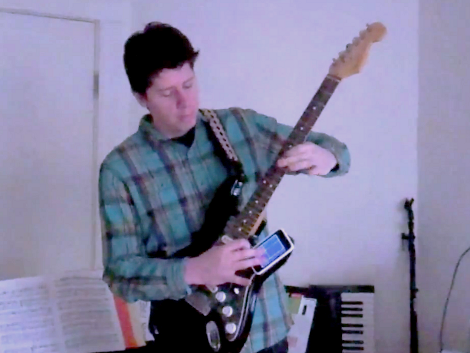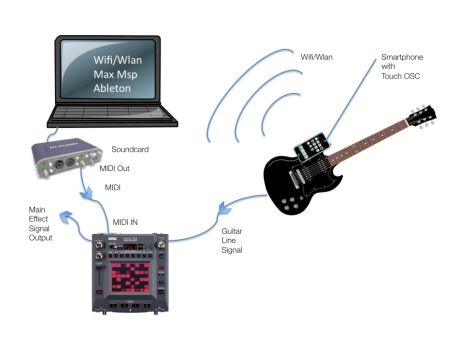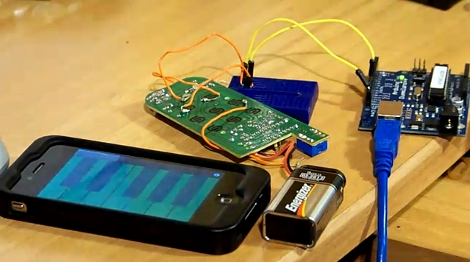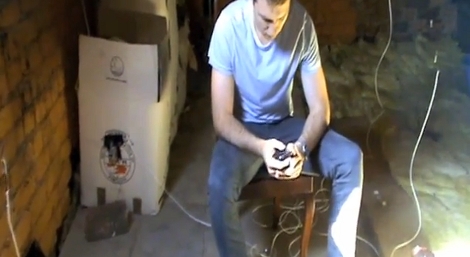
[Rob Morris] has been hard at working improving his guitar augmentation techniques. Here he’s demonstrating the use of an iPhone to control the effects while he plays. This builds on the work he shared a few years ago where he strapped a Wii remote to the body of his ax.
Just like the Wii remote, the iPhone includes an accelerometer. As you would expect the best parts of the older hack made it into this one, but the inclusion of the touch screen adds a lot more. In the clip after the break he starts by showing off the screen controlling a whammy bar functionality. But we really love the octave offset feature that comes next. This kind of sound manipulation simply can’t be done using a purely physical method (like the whammy bar can). But he’s not done yet. The demo finishes with a Theremin feature. You’ll notice he plucks a string but no sound comes out until he starts touching the screen. This turns it into an entirely different type of instrument.
The only info we have about putting this together is the list of packages he’s using: TouchOSC, Max/Msp, and GuitarRig
Continue reading “IPhone Wielding Guitar Adds Tip Of Your Finger Or Tip The Instrument Control”














